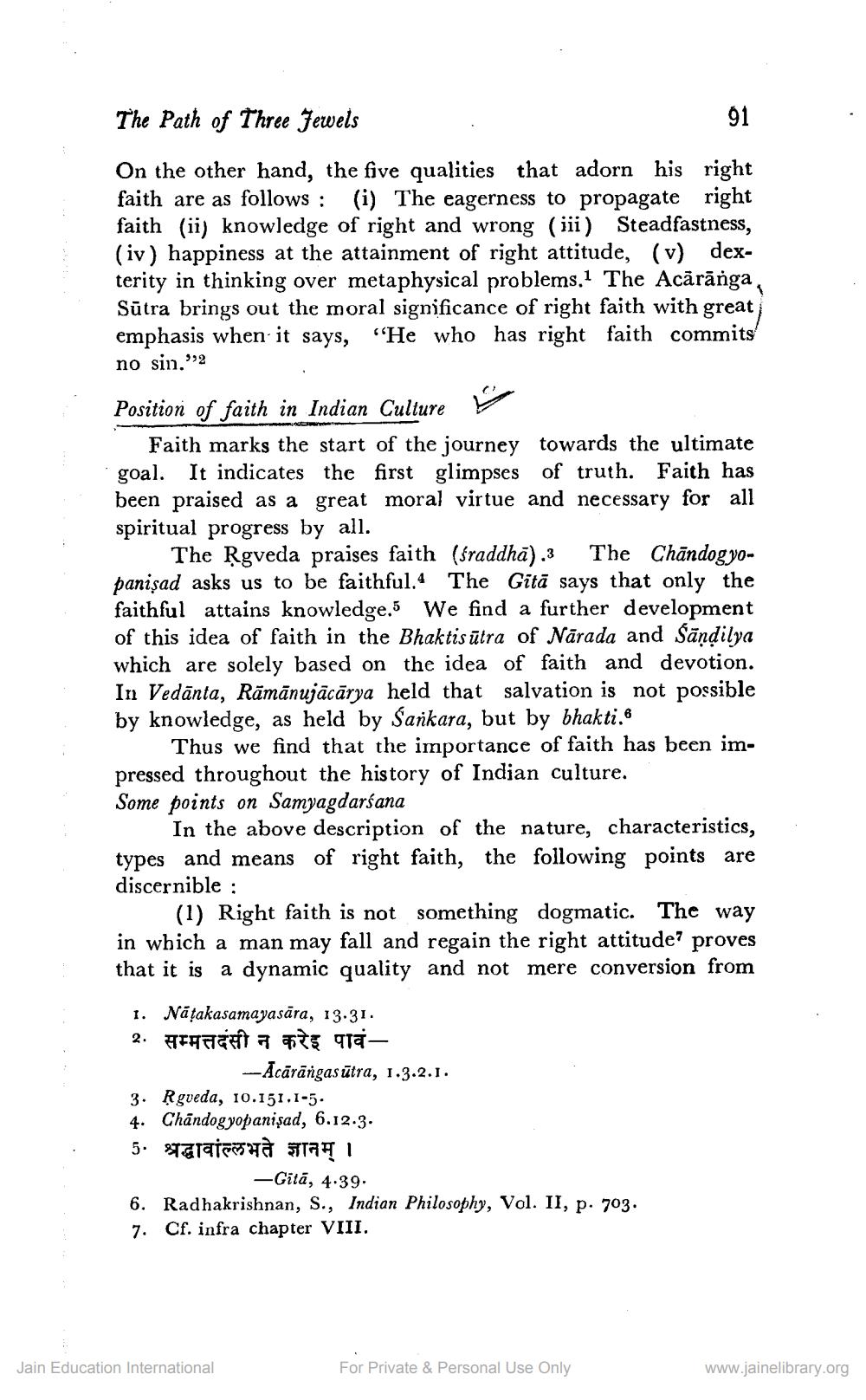________________
The Path of Three Jewels
91
On the other hand, the five qualities that adorn his right faith are as follows: (i) The eagerness to propagate right faith (ii) knowledge of right and wrong (iii) Steadfastness, (iv) happiness at the attainment of right attitude, (v) dexterity in thinking over metaphysical problems.1 The Acārānga, Sūtra brings out the moral significance of right faith with great emphasis when it says, "He who has right faith commits' no sin."2 Position of faith in Indian Culture
Faith marks the start of the journey towards the ultimate goal. It indicates the first glimpses of truth. Faith has been praised as a great moral virtue and necessary for all spiritual progress by all.
The Rgveda praises faith (fraddhā).3 The Chāndogyopanişad asks us to be faithful.4 The Gitā says that only the faithful attains knowledge. We find a further development of this idea of faith in the Bhaktis ūtra of Nārada and Sändilya which are solely based on the idea of faith and devotion. In Vedānta, Rāmānujācārya held that salvation is not possible by knowledge, as held by Sarkara, but by bhakti.
Thus we find that the importance of faith has been impressed throughout the history of Indian culture. Some points on Samyagdarśana
In the above description of the nature, characteristics, types and means of right faith, the following points are discernible :
(1) Right faith is not something dogmatic. The way in which a man may fall and regain the right attitude proves that it is a dynamic quality and not mere conversion from
1. Nățakasamayasāra, 13.31. 2. सम्मत्तदंसी न करेइ पावं
--Acārārgas ütra, 1.3.2.1. 3. Rgveda, 10.151.1-5. 4. Chandogyopanişad, 6.12.3. 5. Teatesà Tapi
-Gitā, 4.39 6. Radhakrishnan, S., Indian Philosophy, Vol. II, p. 703. 7. Cf. infra chapter VIII.
Jain Education International
For Private & Personal Use Only
www.jainelibrary.org




